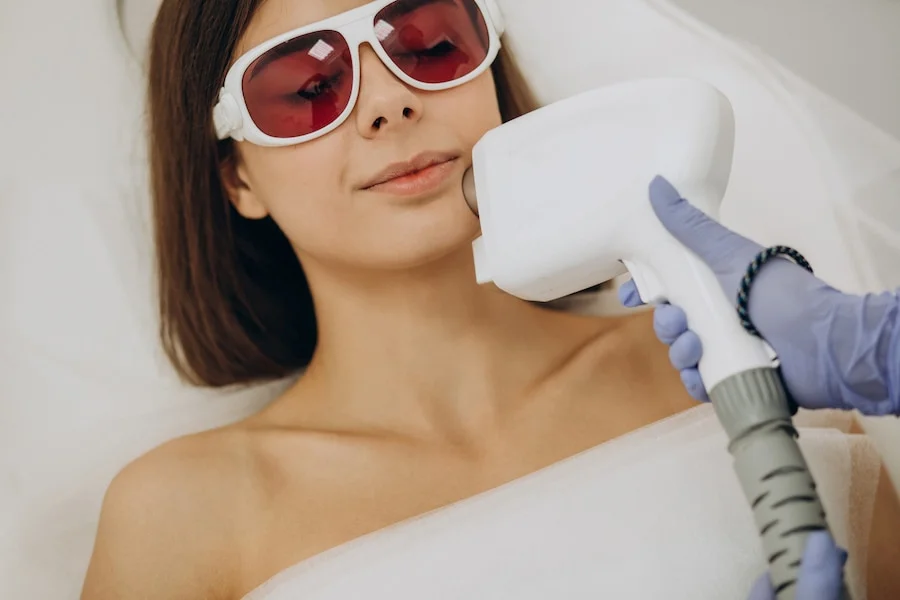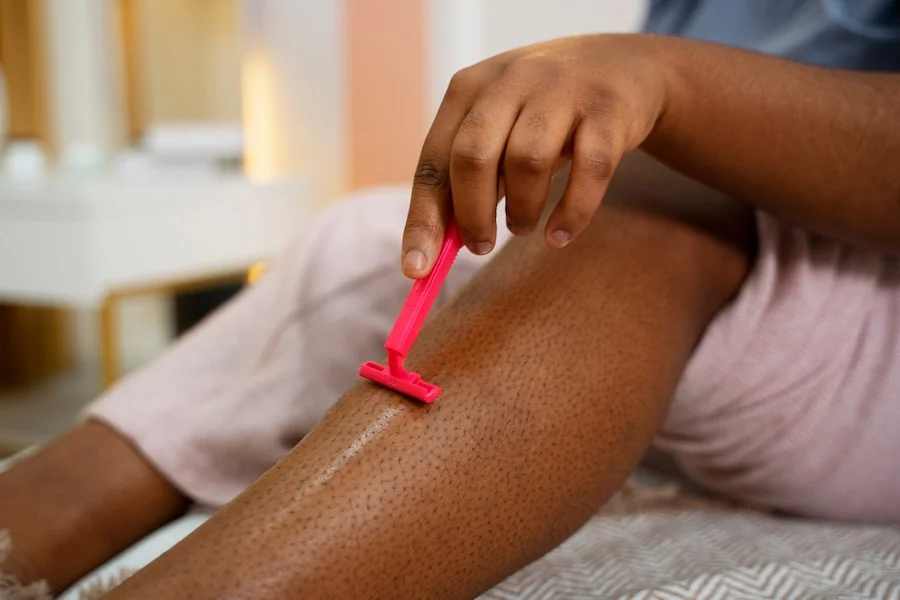Are you considering laser hair removal but worried about potential side effects?
While laser hair removal is a safe and effective way to permanently remove hair, there are some side effects to be aware of.
Of particular concern for those seeking treatment in the Ottawa area are acne breakouts and skin irritation.
In this blog post, we’ll explore what you need to know about laser hair removal side effects and how to manage them.
Table of Contents
ToggleUnderstanding Laser Hair Removal Side Effects
Laser hair removal works by using a laser to target hair follicles, heating them up and damaging them so they can no longer grow hair.
While this process is safe and effective, it can cause some temporary side effects.
These can include redness, swelling, pain, mild irritation/sensitivity, slight discoloration, and possible infection.
Most side effects are mild and typically subside within a few hours to a few days.
Can Laser Hair Removal Get Rid of Strawberry Legs?
Acne Breakouts: A Common Concern
Although a common concern, laser hair removal itself does not typically cause acne or acne breakouts.
It can be particularly concerning for those with sensitive or acne-prone skin.
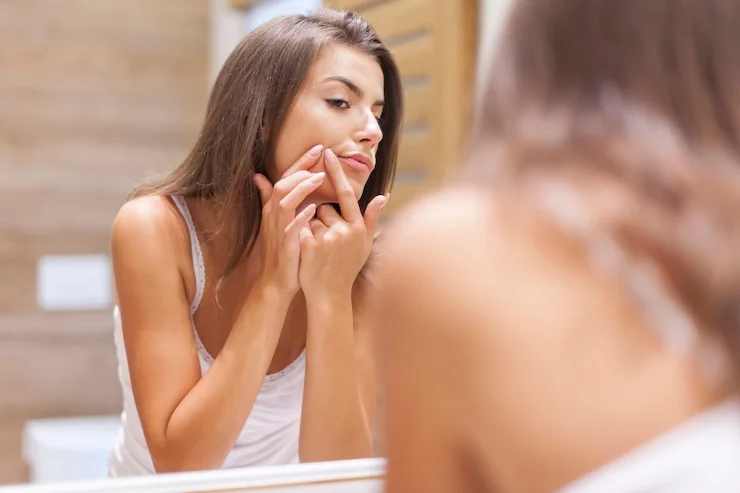
A multi-center prospective study found that acneform reactions were reported in approximately 6% of patients undergoing laser hair removal.
Interestingly, factors such as age, the type of laser used, and Fitzpatrick skin type played significant roles in determining the likelihood of these reactions.
Younger patients seemed more susceptible, and the Nd:YAG laser type was associated with a higher incidence compared to the alexandrite.
Skin type V exhibited the highest occurrence, followed by types II and IV.
However, it’s reassuring to note that these reactions are typically mild and of short duration.
So how does laser hair removal relate to acne, and what can you do to manage it?
Related: Is Potenza™ Good For Acne Scars?
How Does Laser Hair Removal Relate to Acne?
Acne breakouts after laser hair removal are typically caused by the heat and irritation of the treatment.
During the laser hair removal treatment, the laser’s heat can stimulate your skin, leading to an increase in oil production.
When excess oil mixes with dead skin cells and gets trapped in your pores, this can cause the pores to become clogged and lead to breakouts.
Additionally, an overgrowth of bacteria such as Propionibacterium acnes (P. acnes) that cause acne can be stimulated by the heat of the laser, leading to further breakouts.
Related: How Laser Hair Removal Works (A 7-Step Guide To Hair-Free Skin)
Managing Acne After Laser Hair Removal
To manage acne breakouts after laser hair removal, it’s important to keep your skin clean and hydrated.
Here are some guidelines for effectively handling acne following laser hair removal:
– Cleanse your skin twice daily using a mild, gentle cleanser. Avoid harsh soaps or cleansers, as these can irritate your skin and exacerbate acne.
– Consider using over-the-counter acne treatments like benzoyl peroxide or salicylic acid. These products can combat acne-causing bacteria and unclog pores.
– Resist the urge to touch your face during the day. This prevents the spread of bacteria and excess oil.
– Opt for skincare products and makeup that are non-comedogenic, ensuring they won’t block your pores.
– If your acne persists or becomes severe, schedule an appointment with your healthcare provider. They can prescribe stronger medications or treatments tailored to your specific needs.
– To alleviate redness in the treated area, apply a cool compress or soothing aloe vera gel.
– Avoid exfoliating the treated area for at least a week post-treatment, as it can lead to skin irritation.
– Before heading outdoors, apply sunscreen with an SPF of 30 or higher to shield your skin from the sun’s harmful UV rays, which can worsen acne.
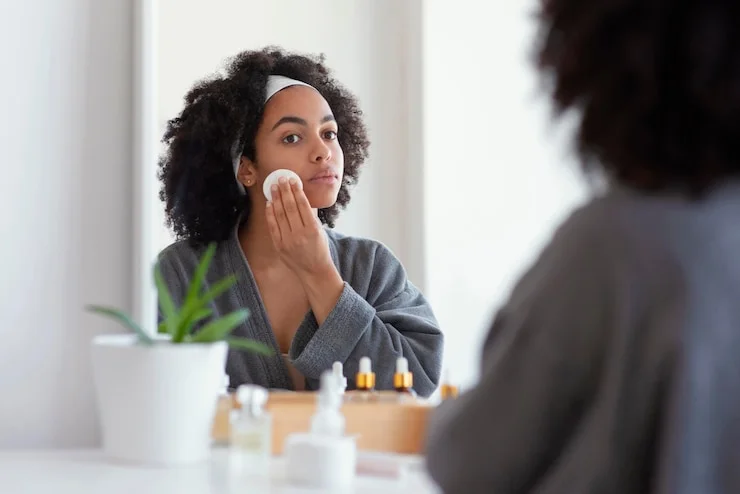
Remember, if you’re dealing with acne after laser hair removal, patience is key.
It might take several weeks or even months for your skin to fully clear.
Consulting your laser hair removal provider or physician is strongly recommended if your acne concerns persist or worsen despite these measures. ( Speak with a medical expert )
Everything you need to know about the Elite iQ: Cynosure’s Elite iQ: The Life-Changing Laser Hair Treatment
Beyond Acne: Other Side Effects to Be Aware Of
While acne is uncommon, there are other more common side effects that you should be aware of before undergoing laser hair removal. These can include:
Redness and Irritation
The most common side effects of laser hair removal are redness and irritation.
These effects occur because the laser’s heat can temporarily affect the skin.
Typically, redness and irritation resolve on their own within hours to a few days.
However, if you experience severe or prolonged redness and irritation, you should contact your provider.
Slight Discoloration
In some cases, laser hair removal can cause temporary changes in skin color, either lightening or darkening the treated area. This effect is usually not permanent.
Lighter discoloration tends to affect individuals with darker skin tones, while darker discoloration is more common in those with lighter skin tones.
Dark-skinned and considering laser hair removal? : Laser Hair Removal And Dark Skin: What You Need To Know
Post-Inflammatory Hyperpigmentation (‘Burn Marks’)
Post-inflammatory hyperpigmentation (PIH) can lead to dark patches on the skin, particularly in individuals with darker skin tones.
PIH is often triggered by skin inflammation, which can occur after laser hair removal.
While PIH typically fades over time, it may take several months to years.
Blisters
Blisters are a rare side effect of laser hair removal and can result from excessive laser intensity or frequent treatments.
While blisters usually heal on their own within a few days, If you experience this side effect, contact your provider immediately.
Hair Regrowth
While laser hair removal aims to permanently reduce hair growth, it’s important to note that some regrowth may occur gradually.
Excessive hair regrowth in the treated area is unusual.
However, it’s common for patients to notice an initial increase in hair growth during the 1 to 3 weeks following laser hair removal sessions as hair follicles in the growth cycle naturally shed.
Keep in mind that achieving the best results with laser hair removal typically involves undergoing multiple sessions.
Paradoxical Hypertrichosis
This is different from regrowth. Paradoxical hypertrichosis occurs when the hair in the treated area becomes thicker, darker, and more abundant instead of reducing hair growth.
Certain factors that may increase the risk of paradoxical hypertrichosis include:
- Darker skin types: Particularly those of southeast Asian descent.
- Thinner hairs: it is thought that inadequate or incorrect treatment settings stimulate the surrounding fine hairs.
- Hormonal imbalances: Conditions like polycystic ovary syndrome (PCOS) can influence hair growth.
Related article : Laser Hair Removal for PCOS: Is It Right for You?
Preventing and Treating Post-Laser Hair Removal Side Effects
Let’s explore effective ways of preventing and treating post-laser hair removal side effects.

Preventing Acne Breakouts
To prevent acne breakouts after laser hair removal, adopt these practices:
- Cleanse your skin gently twice a day using a mild cleanser. Harsh soaps can irritate your skin and worsen acne.
- Avoid touching your face during the day to prevent the spread of bacteria and oil.
- Choose skincare and makeup products with a non-comedogenic label, which means they won’t clog your pores.
- Before heading outside, apply sunscreen with an SPF of 30 or higher to safeguard your skin from the sun’s harmful UV rays, which can exacerbate acne.
Treating Acne Breakouts:
If you do experience acne breakouts following laser hair removal:
- Continue to cleanse your skin gently twice daily with a mild cleanser, avoiding harsh soaps.
- Apply an over-the-counter acne treatment, such as benzoyl peroxide or salicylic acid. These products can combat acne-causing bacteria and unclog pores.
- Refrain from touching your face throughout the day to prevent further bacterial spread.
- Stick with non-comedogenic skincare products and makeup to avoid pore blockage.
- If your acne remains severe or persistent, consult your physician. They can prescribe stronger medications or treatments to help clear your acne effectively.
Redness and Irritation
Typically, redness and irritation resolve on their own within a few days to a week.
However, to ease discomfort and support healing, you can:
- Apply a cool compress or relaxing aloe-vera gel to the affected area.
- Avoid exfoliating the treated skin for at least one week after your laser hair removal session.
- Choose a fragrance-free and non-comedogenic moisturizer.
Slight Discoloration
To address slight discoloration, consider these steps:
- Apply sunscreen with an SPF of 30 or higher to shield the treated area from UV rays.
- Use a skin lightening product containing hydroquinone or kojic acid.
- Consult your provider for prescription-strength treatments if needed.
- If hypopigmentation, topical steroids may be tried.
Post-Inflammatory Hyperpigmentation
Prevention is key. Ensuring that a test patch is done days prior to your actual appointment will minimize this risk. Especially if you are of a darker skin type (IV-VI).
Treatment of PIH is similar to discoloration. Consider these recommendations:
- Apply sunscreen with an SPF of 30 or higher to protect the treated area from sun exposure.
- Utilize a skin-lightening product with hydroquinone or kojic acid.
- Consult a doctor for prescription-strength treatments if necessary.
Blisters
- Consult your provider or Physician immediately
- Use a cold compress to soothe the blisters
- Cover the blisters with a bandage to prevent infection.
- Refrain from popping or breaking the blisters.
Hair Regrowth
Most individuals typically require a series of 3 to 5 laser hair removal sessions spaced out over 4 – 6 weeks to achieve up to 80% permanent hair removal.

The intervals between sessions are important to allow the treated areas to recover and for dormant hair follicles to enter their active growth phase.
To manage hair regrowth, periodic touch-up treatments may be necessary.
A treatment regimen can be suggested by your medical professional based on your particular requirements.
After completing the initial treatments, many patients experience long-lasting results and if there is any hair regrowth, it usually appears lighter in color and finer in texture.
For this reason, yearly touch-up sessions would be required.
Paradoxical Hypertrichosis
Although this condition leads to thicker, more abundant hairs, treatment consists of more laser hair removal sessions.
Once the thin hairs become thick, the laser is better able to target the hair follicles and permanently destroy them.
Preparing for a Successful Laser Hair Removal Session
To ensure a successful laser hair removal session, it’s important to prepare your skin properly. This includes:
Skincare Before Treatment
In preparation for your treatment, it’s essential to follow a few guidelines.
Firstly, refrain from tanning for at least 2 weeks prior.
Stop the use of topical products containing retinol or glycolic acid for at least 5 days before your session.
Avoid exercising, and applying moisturizers, body oils, colognes, or perfumes to the treatment area on the day of your laser session.
Additionally, make sure to shave the treatment area 1-2 days before your scheduled session to ensure optimal results.
Related : Why is Shaving Before Laser Hair Removal So Important?
What to Expect During the Session
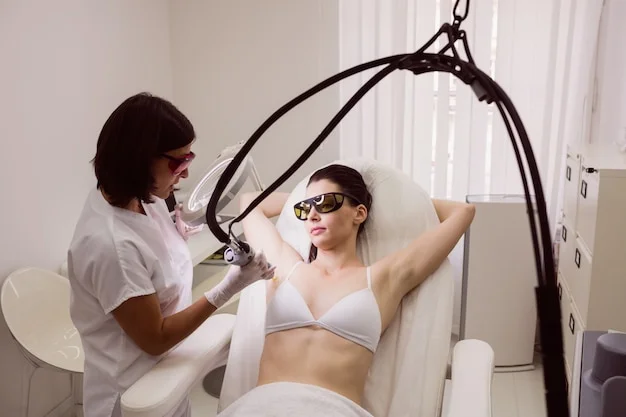
During your session, you may feel a slight warming or snapping sensation as the laser targets the hair follicles.
The majority of patients report that the treatment is mostly painless.
At our medical cosmetic clinic in Limoges, ON, we use the Cynosure Elite iQ laser for laser hair removal.
This dual-wavelength laser works for all skin and hair types (except for blonde, gray, and red hair) and has a cooling system that makes the treatment comfortable.
It’s the ideal solution for laser hair treatment if you are considering laser hair removal in Ottawa, Embrun, Russell, and Casselman, ON.
Post-Laser Hair Removal Care and Best Practices
After your session, steer clear of direct sunlight. Apply sunscreen with an SPF of 30 or higher to the treated area before heading outdoors.
Also, refrain from taking hot baths or showers within the first 24 hours.
Additionally, opt for mild skincare products to avoid irritation. Remember to cleanse your skin twice daily using a gentle cleanser, and make a conscious effort to avoid touching your face throughout the day.
Before laser hair removal treatment at our clinic, Dr. Lian gives you all the instructions you need to follow both before and after your treatment session.
Conclusion
In summary, if you’re considering laser hair removal in the Ottawa area, it’s essential to understand potential side effects such as skin discoloration and skin irritation.
While these effects are typically temporary and manageable, following pre- and post-treatment guidelines is crucial to minimize the risk.
Additionally, be aware of other possible side effects like redness, acne, post-inflammatory hyperpigmentation, blisters, hair regrowth, and paradoxical hypertrichosis, which can often be addressed with proper care.
With the right precautions and post-treatment practices, you can enjoy long-lasting hair removal with minimal side effects.
Consult an aesthetic physician for personalized guidance if you have concerns or persistent issues.
Frequently Asked Questions
Why do I break out after laser hair removal?
There are a few reasons why you might break out after laser hair removal:
- The heat from the laser can irritate the skin and cause inflammation.
- The laser can damage the skin barrier, making it more susceptible to infection.
- The laser can open up the pores, allowing bacteria and other irritants to enter.
- Some people may be more prone to acne breakouts after laser hair removal due to their skin type or other factors.
Is laser hair removal bad for acne-prone skin?
Laser hair removal can be safe and effective for people with acne-prone skin, but it is important to talk to your dermatologist before treatment.
They can help you determine if laser hair removal is right for you and can provide guidance on how to manage any potential side effects.
Can Brazilian laser hair removal cause acne?
Yes, Brazilian laser hair removal can cause acne, just like any other type of laser hair removal.
However, the risks of acne are generally lower for Brazilian laser hair removal than for other areas of the body, such as the face or back.
Can laser hair removal cause skin problems?
Yes, laser hair removal can cause skin problems, such as acne, redness, irritation, and discoloration.
However, these side effects are usually temporary and resolve on their own within a few days to a week.
How do you prevent acne after laser hair removal?
There are a few things you can do to prevent acne after laser hair removal:
- Cleanse your skin twice daily with a gentle cleanser.
- Avoid touching your face throughout the day.
- Avoid using harsh skincare products or makeup.
- Apply a sun-screen with an SPF of 30 or higher to the treated area before going outside.
How does laser affect acne?
The heat from the laser can irritate the skin and cause inflammation, which can lead to acne breakouts.
However, laser hair removal can also help to improve acne in some cases.
For example, laser hair removal can help to reduce the number of hair follicles, which can make it more difficult for bacteria to grow and cause acne.
Does laser hair removal cause clogged pores?
Laser hair removal does not directly cause clogged pores.
However, the heat from the laser can irritate the skin and cause inflammation, which can lead to the clogging of pores.
Why do I get little pimples after a Brazilian?
There are a few reasons why you might get little pimples after a Brazilian:
- The heat from the laser can irritate the skin and cause inflammation.
- The laser can damage the skin barrier, making it more susceptible to infection. It can also open up the pores, allowing bacteria and other irritants to enter.
- Some people may be more prone to acne breakouts after Brazilian laser hair removal due to their skin type or other factors.
How do you treat acne after hair removal?
If you experience acne breakouts after hair removal, there are a few things you can do to treat them:
- Use a gentle cleanser to clean your skin twice per day.
- Apply an over-the-counter acne treatment, such as benzoyl peroxide or salicylic acid.
- Avoid touching your face throughout the day.
- Avoid using harsh skincare products or makeup.
- See your provider or physician if your acne is severe or persistent.
Does laser hair removal help with hormonal acne?
Laser hair removal can help to reduce the number of hair follicles, which can make it more difficult for bacteria to grow and cause acne.
However, laser hair removal is not a cure for hormonal acne.
How often should you exfoliate after laser hair removal?
It is important to avoid exfoliating the treated area for at least one week after laser hair removal, as this can irritate your skin and make your acne worse.
After one week, you can exfoliate the treated area 2-3 times per week using a gentle exfoliator.
Quick Links

Dr. Lian Peter, MD, MPH, CCFP, is a Family physician with a passion for aesthetics. In her aesthetic clinic, she provides a wide range of minimally invasive and non-invasive procedures, constantly honing her skills to deliver exceptional care and help patients attain their desired appearance.


